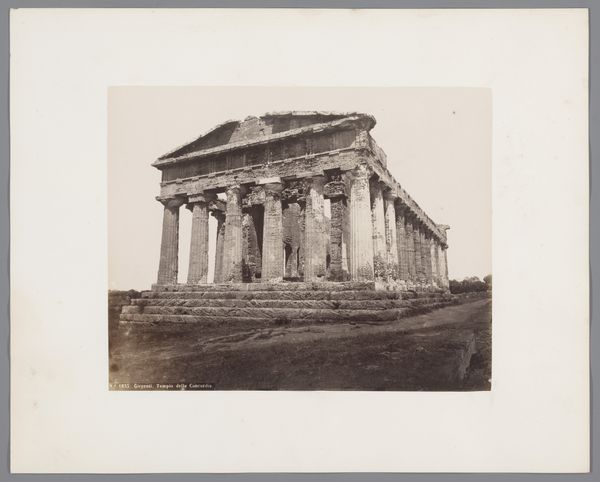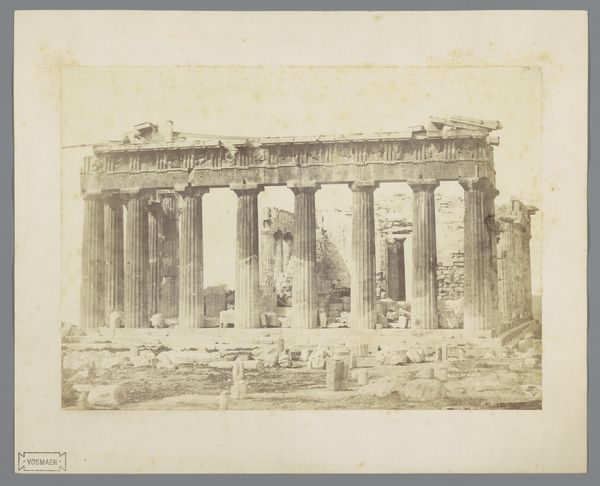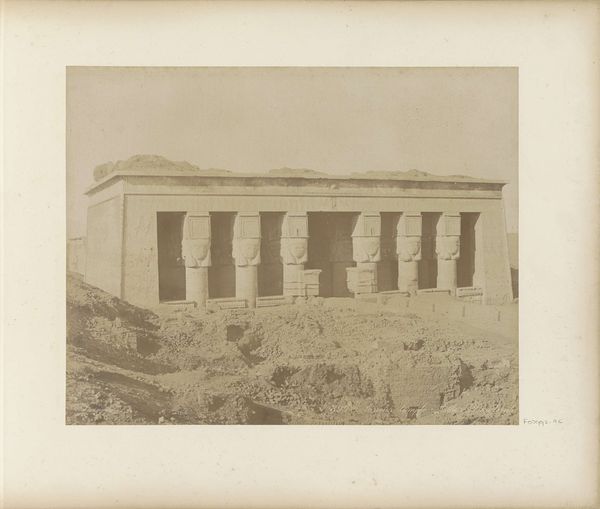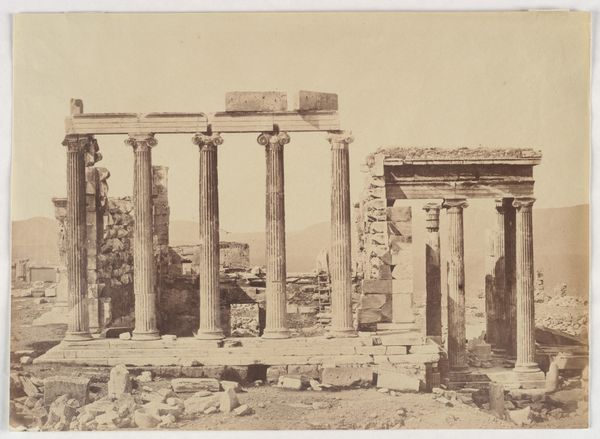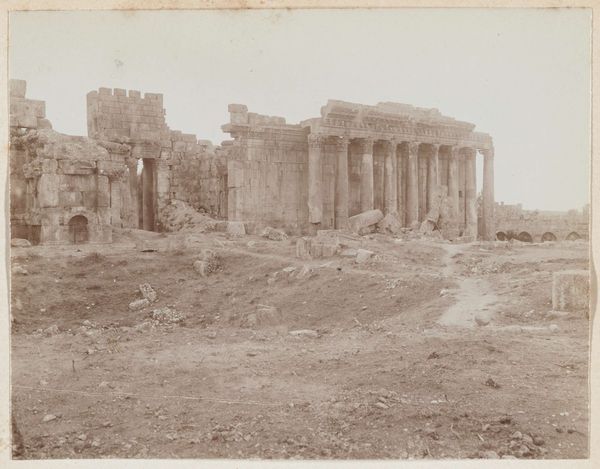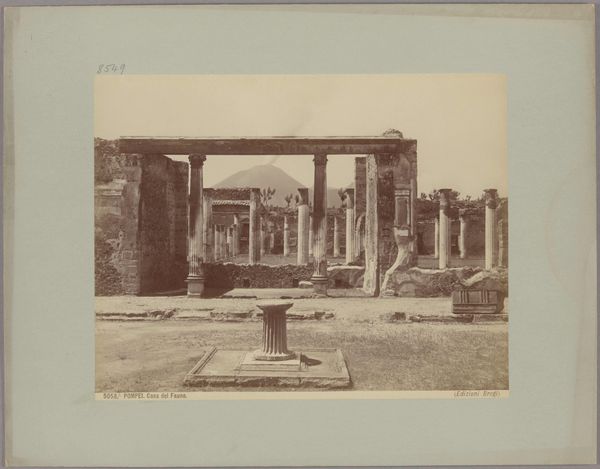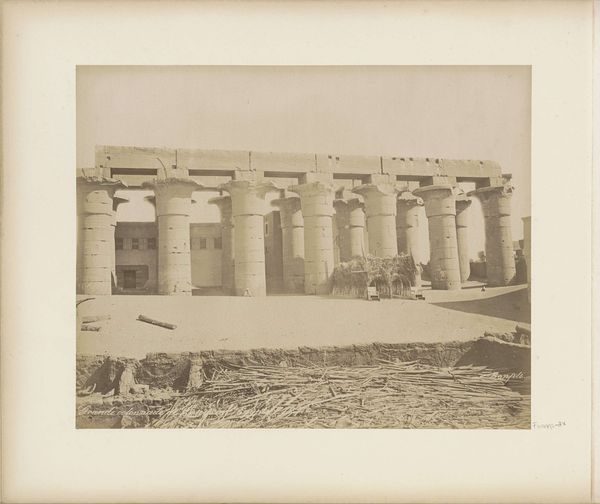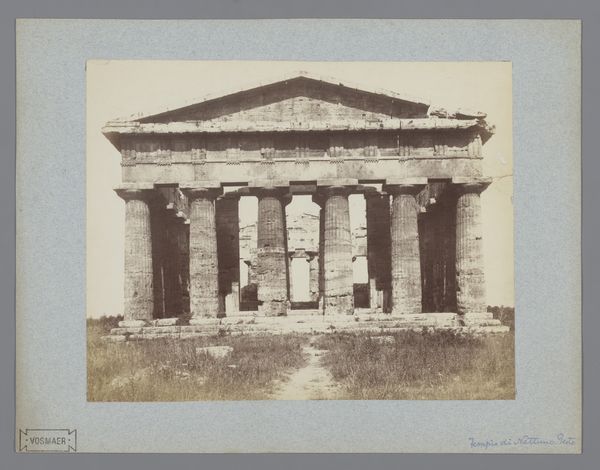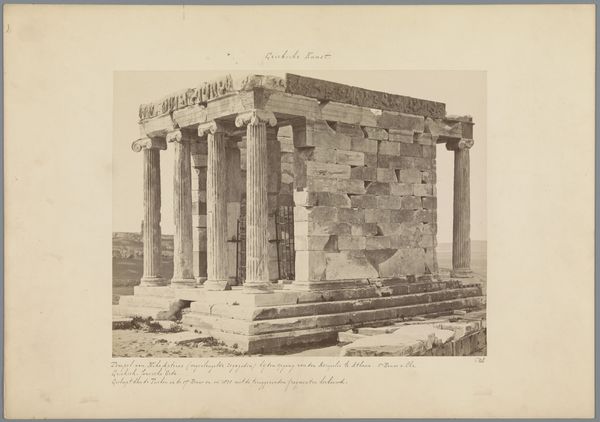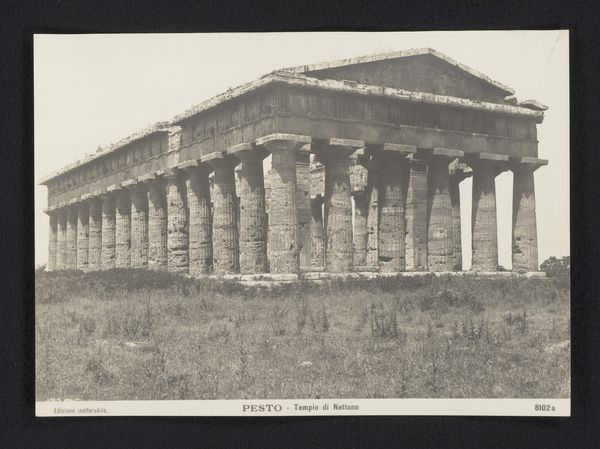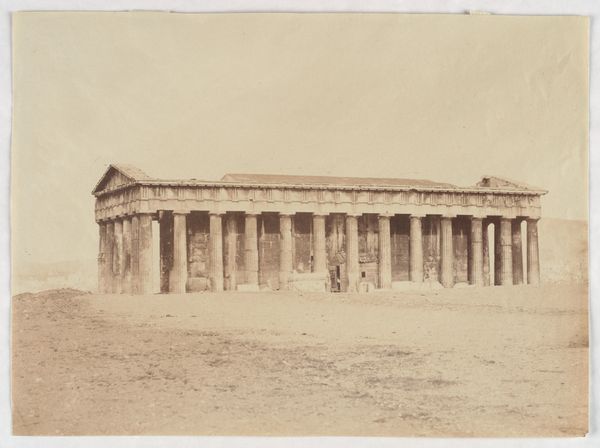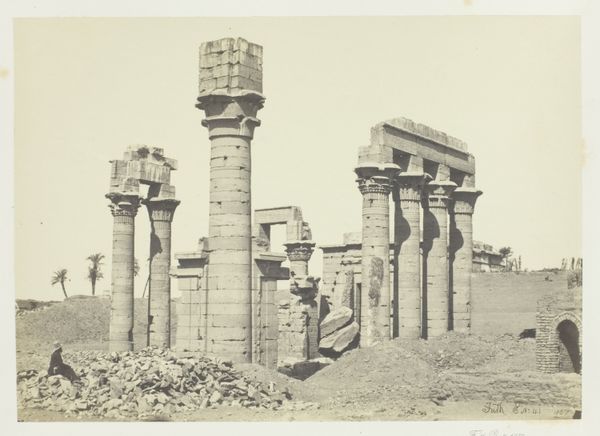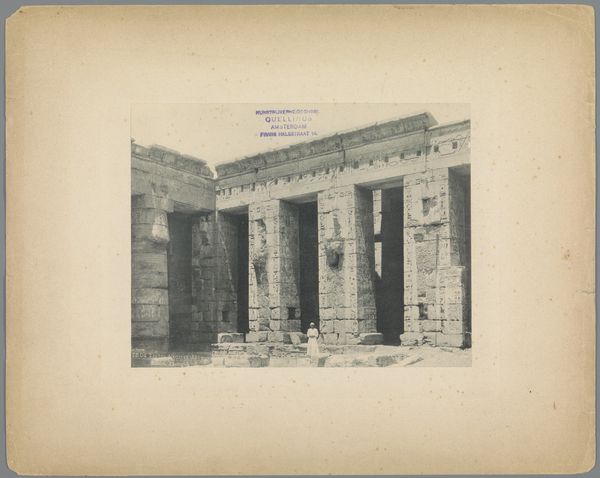
Paestum_ The Photographer in front of the Temple of Neptune c. 1860
0:00
0:00
plein-air, paper, photography, albumen-print, architecture
#
16_19th-century
#
pale palette
#
photo restoration
#
plein-air
#
greek-and-roman-art
#
landscape
#
paper
#
photography
#
orientalism
#
cityscape
#
italy
#
albumen-print
#
architecture
Copyright: Public Domain
Sommer & Behles made this albumen print titled 'Paestum - The Photographer in front of the Temple of Neptune', around 1856. The photograph captures not only the ancient Greek temple but also a contemporary photographer at work, highlighting the 19th-century fascination with antiquity. The image exists within the context of the Grand Tour, a traditional trip of Europe undertaken by mainly upper-class European young men of means. It served as an educational rite of passage. Photography offered a way to document and collect these experiences. Note that while the temple is the main subject, the inclusion of the photographer brings up questions of authorship, perspective, and the act of seeing itself. This adds a layer of self-awareness to the image. The sepia tones and the classical subject matter evoke a sense of nostalgia. It invites us to reflect on the layers of history and representation, and the complex relationship between the past and the present.
Comments
stadelmuseum about 2 years ago
⋮
The photographic collection of the Städel Museum grew continuously, also thanks to gifts from private persons. Gerhard Malß, who succeeded Johann David Passavant as director of the Städelsches Kunstinstitut in 1861, devoted himself to the collection’s further development. In 1864 he donated photos from his private holdings to the Städel, including views of Neptune Temple in Paestum. They had been taken by one of the most successful photographers of the time. Under the Italianized first name Giorgio, Georg Sommer—who had trained as a businessman in Frankfurt—opened photo studios in Rome and Naples in 1856/57. He and Edmund/Edmondo Behles of Stuttgart together also explored the south of Italy. In the 1860s it was a region that had not yet been exploited for tourism while at the same time its many ancient buildingsoffered a wealth of motifs. For the shootings, the photographers stepped into the role of ‘staffage’ themselves.
Join the conversation
Join millions of artists and users on Artera today and experience the ultimate creative platform.
